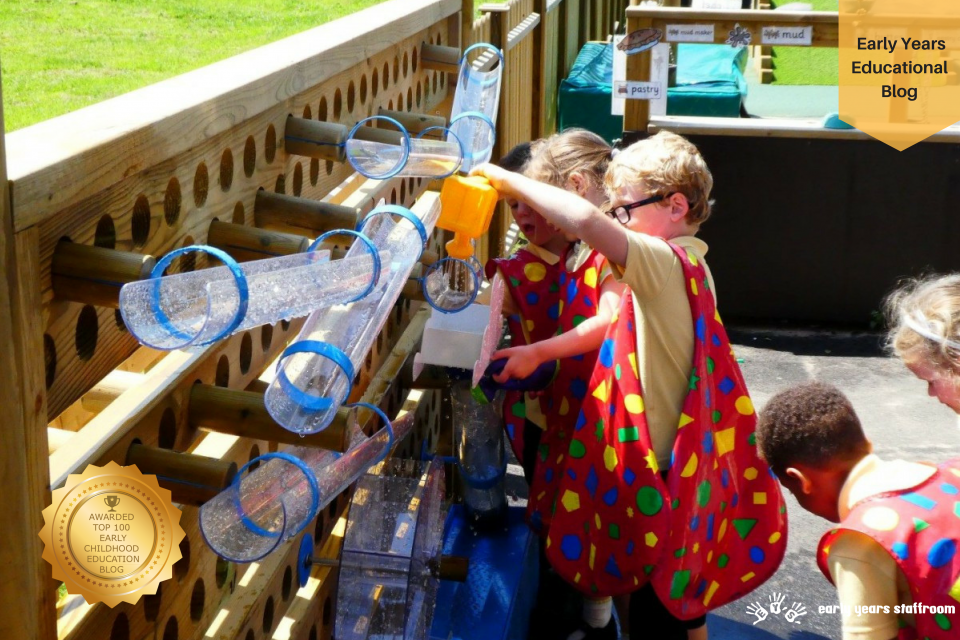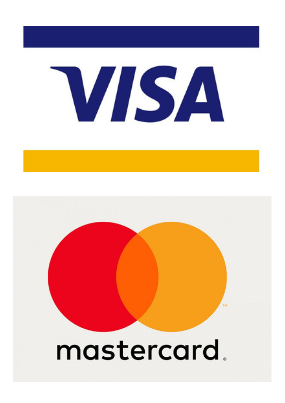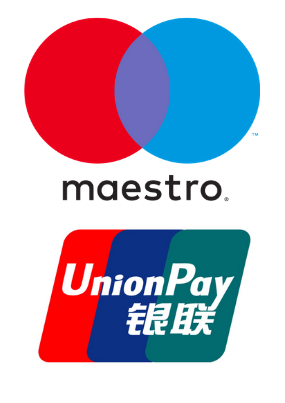A Water Wall can create lots of excitement in an Early Years setting as well as develop children’s Characteristics of Effective Learning and there are lots of opportunities to include all areas of learning. It combines sensory water play with investigative learning. It offers a wonderfully practical way of teaching and demonstrates lots of different concepts. In addition, of course, young children love playing with water and experimenting with all the different things that a Water Wall can do! This excitement, along with some variety, will lead to amazing engagement and learning.
How can you make most use out of your Water Wall in the Early Years? Are you stuck for ideas to give it a new life? We have a few suggestions to help you develop some great outdoor learning activities at your Water Wall.
Mix it up!
A good Water Wall design allows children to build their own routes for the water to follow allowing them to play and explore. Use different sizes and angles of runways to move around the frame. It doesn’t have to be fixed, they can change the course at any time. This is great for working on motor skills and physical development as much as it is for cognitive skills, exploring and problem solving. They can chose ways to do things and discover for themselves what can be done to stop the flow of water or to influence its speed or course. They can experiment with viscosity, mixing water with flour or gel to make it thicker and see what impact it has on the flow.
Not just water!
It is great for sensory learning. You can use other materials like foam, marbles or ping pong balls as an alternative to water or add a few drops of food colouring to the water and mix colours to see what colour is created by the end of the flow. When biodegradable glitter is added to the water, it creates a sediment and leaves a trail to capture children’s curiosity. Children can use their own ideas to collect natural items from the playground to run down the course, float on or mix with the water – sand, soil, leaves and twigs allowing them to play with what they know. It’s all about discovery – cause and effect. And it’s nothing that can’t be hosed down afterwards! It’s great fun for children learning to experiment together as a team, be creative and discover something new for themselves.
Understanding the world
By its nature a Water Wall is a perfect aid for teaching children all about water, and why it is so important to us. What is water and where does it come from? It’s a colourless, odourless, transparent liquid which forms rain, rivers, lakes and seas. It is the basis of fluids in all the living things in the world around us – fascinating facts for some fascinated four and five year olds! What is is used for? From everyday uses such as drinking water for survival for humans and animals, cleaning and washing, to industrial uses such as transportation and generating energy. Time spent playing at the Water Wall creates an opportunity to talk to children about all of these things, and to get children thinking about and discussing their own experiences of water. Ask them open questions, for example, why do you think we have water? I wonder how we get water? There is plenty of wonderful new vocabulary for them to learn and improve their communication and language skills here too.
Magic Water!
Water is fascinating because it is ever changing and moving. Whilst children are playing at the Water Wall, ask them to take the time to notice, touch and listen to the water as it runs across the Water Wall, splashing, dripping and flowing. Ask them open questions, for example, how does it feel on your hands? What does it sound like? Explore the properties and features of water with the children. What influences it temperature? What happens to water when it boils or freezes? Use the Water Wall across the seasons to explore this. This is especially interesting during winter months when water freezes. You can leave all sorts of different things out to get trapped in the ice overnight and let the children discover them. They will be excited to put their coats on the next day and go out to explore! What happens if they warm it up with their hands or their breath? Use heat or tools to break it up and watch what happens. What happens to the water on hot days?
Rain Rain Come and Play
What is rain and where does rain come from? Nature has an amazing way of recycling water so that our planet has a constant supply. A Water Wall is an ideal hands-on demonstrative tool for teaching young children about the water cycle for linking Understanding the World and Science. See water cycle planning here.
Maths with Water
Timing, counting and measuring games at the Water Wall are really good fun ways of helping to teach Early Years children Maths. Simply filling the Water Wall at the top and counting out loud with the children how many seconds it takes for all the water to reach the bottom is a good place to start. Let the children explore how they can influence the speed of the water when they re position the size and angles of guttering for the water to travel down, using longer and shorter pieces. How can they make it go faster or slower? What is the time difference? All sorts of measuring experiments can be enjoyed too, using different sized vessels to add water to the wall. How much water have we put in at the top? Can we measure how much is left at the bottom? Why does the water always travel downwards? Talk about the meaning of gravity. Lots of new concepts and vocabulary to explore here.
Experiment with materials
Discuss with children what it means when something is waterproof. Can they think of any waterproof items they have come across? Explore the difference when they let waterproof items (e.g. ping pong balls, candle wax, plastic toys) and non-waterproof items (e.g. paper, cloth, sponge) travel down the Wall. Do they make it to the bottom? Have a go at making things waterproof with plastic bags, cellophane, wax or glue if you can and repeat the experiment together. Is the Water Wall itself waterproof? Does all the water make it down safely from the top to the bottom? Ask children for ideas to make the joins waterproof or watertight?
Expressive Art and Design
Do you know how people and goods travel on water? How do fishermen get out to sea to catch fish? Have you ever been on a boat? Children may be surprised to learn how much we rely on water to get around. Ask children to have some fun building their own miniature boats or rafts using a variety of resources (some waterproof and some not). Use twigs and leaves and tie them together with string or colourful pipe cleaners. Provide cut out sections of egg boxes, painted and cover with glue paste to make them waterproof. Provide little cocktail sticks to make a mast and a sail. Then they can have a go at racing their boats down the Water Wall! How can they get their boats to travel safely all the way down? Do they need to change the course on the Water Wall to make this happen? What floats and what sinks?
The great thing about a Water Wall is that you can always keep learning interactive. Take photos along the way to include in their learning journal, and ask children to draw pictures or write about what they have been doing afterwards. If you discover any more great ideas for using a Water Wall, we would love to hear them!
This article has been written by Emma Homan who is an educational copywriter for Pentagon Play.










